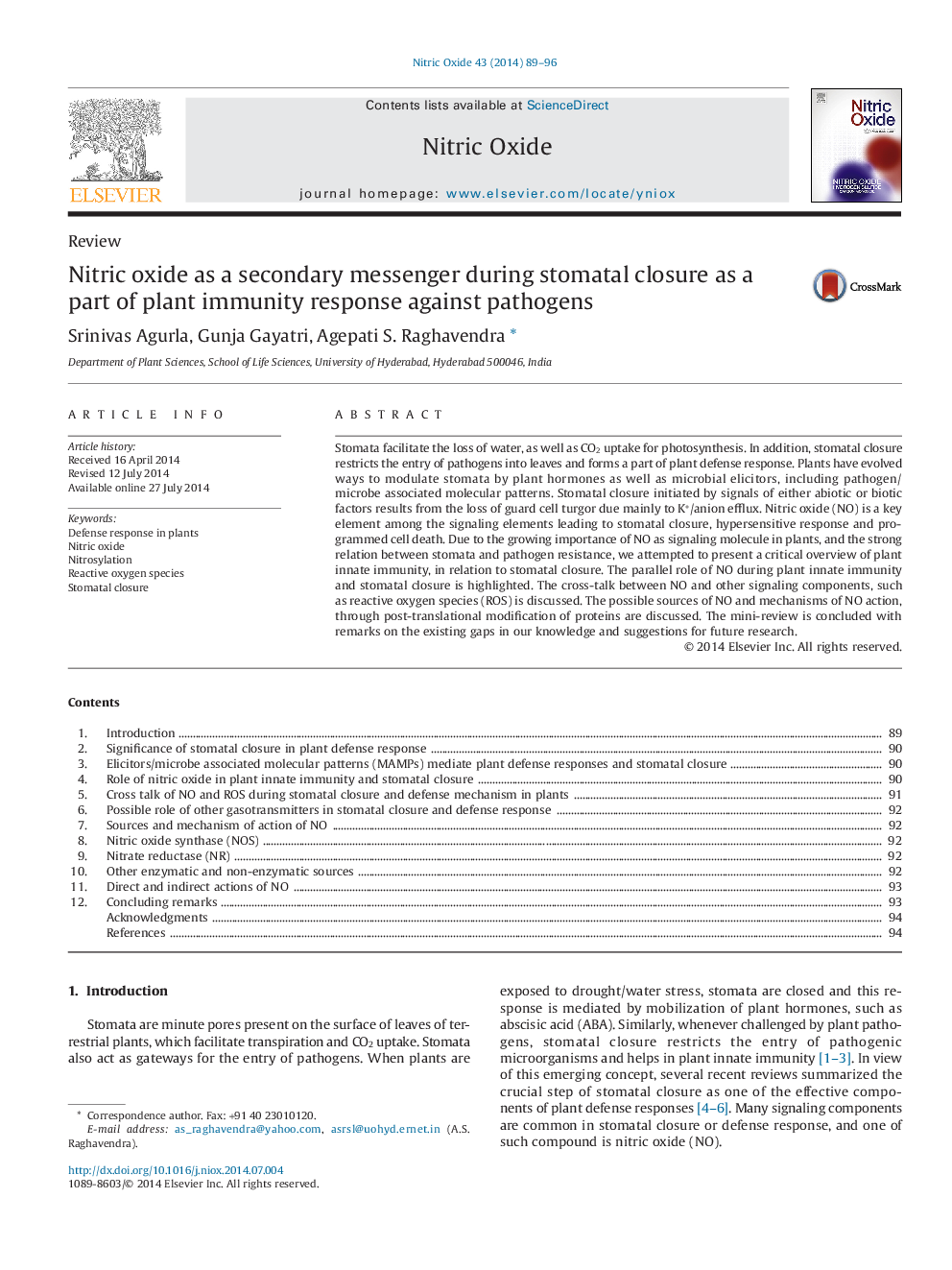| Article ID | Journal | Published Year | Pages | File Type |
|---|---|---|---|---|
| 2000511 | Nitric Oxide | 2014 | 8 Pages |
•Introduction to the growing importance of nitric oxide (NO) as a link between stomatal closure and plant innate immunity, as indicated by the defense responses.•Discussion of cross-talk between NO and reactive oxygen species, followed by a brief account of the enzymatic sources and action of NO.•Concluding remarks on the gaps in our current knowledge and future perspectives.•An illustration of central role of NO in the signaling network in plants during stomatal closure in relation to defense responses.
Stomata facilitate the loss of water, as well as CO2 uptake for photosynthesis. In addition, stomatal closure restricts the entry of pathogens into leaves and forms a part of plant defense response. Plants have evolved ways to modulate stomata by plant hormones as well as microbial elicitors, including pathogen/microbe associated molecular patterns. Stomatal closure initiated by signals of either abiotic or biotic factors results from the loss of guard cell turgor due mainly to K+/anion efflux. Nitric oxide (NO) is a key element among the signaling elements leading to stomatal closure, hypersensitive response and programmed cell death. Due to the growing importance of NO as signaling molecule in plants, and the strong relation between stomata and pathogen resistance, we attempted to present a critical overview of plant innate immunity, in relation to stomatal closure. The parallel role of NO during plant innate immunity and stomatal closure is highlighted. The cross-talk between NO and other signaling components, such as reactive oxygen species (ROS) is discussed. The possible sources of NO and mechanisms of NO action, through post-translational modification of proteins are discussed. The mini-review is concluded with remarks on the existing gaps in our knowledge and suggestions for future research.
